The Umayyad Mosque is one of the most important mosques in the history of Islam; it holds a special significance to the Shi’ah Muslims. This was where the Prophet Muhammad made the walk from Baghdad (Iraq).
The history of the building:
Built originally as a temple by the Arameans to worship the god of storms and lightening or a temple of Hadad-Ramman. When the Romans conquered Damascus in 64 CE they assimilated Hadad with their own god of thunder or better known as Temple of Jupiter. Under the direction of Damascus-born architect Apollodorus, the Romans continued to expand the Temple as the new Greco-Roman Temple of Jupiter which was intended to serve as a response to the Hebrew temple in Jerusalem.
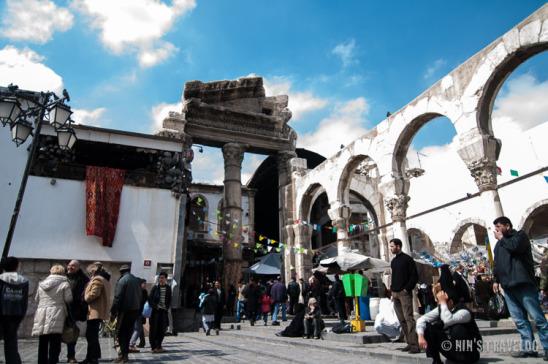
Temple of Jupiter at the end of Al Hamadiyyah Souq and at the entrance to the mosque
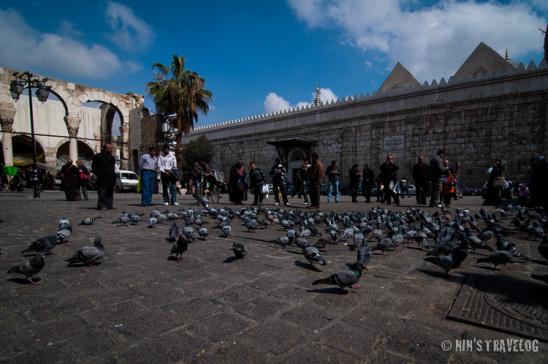
Part of the temple and Umayyad mosque wall
Towards the end of the 4th century, in 391, the Temple of Jupiter became a church, and converted into the Cathedral dedicated to Saint John (John the Baptist) by the Christian emperor Theodosius I (r. 379–395). Legend has it that Saint John’s head was buried there. It served as the seat of the Bishop of Damascus, who ranked second within the Patriarchate of Antioch after the patriarch himself
In 636 CE, after the battle of Yamouk, Damascus was conquered by the Muslims under the leadership of Khalid-bin-Waleed, and the prayer space became a shared space between the Muslims and the Christians. The Muslims prayed on the eastern section and the Christians prayed on the other side. But soon this space was not enough for the Muslims and the reign of the Umayyad Caliph al Walid I negotiated with the Christian leaders to take over the space, and pay compensation for the Christians to move to the other side of the Old Town, as it is now.

Al Gharbiyya Minaret as the most beautiful minaret
They built the Mosque on its current location in 706 to 715 CE. The construction of the mosque was based on the mosque of the Prophet Muhammad in Madinah. It was built with the help of skilled workers from the Byzantine Empire and that reflected on its exterior style of the building, as well as the interior decoration in the main prayer hall. The middle columns supporting the building have the Corinthian order.
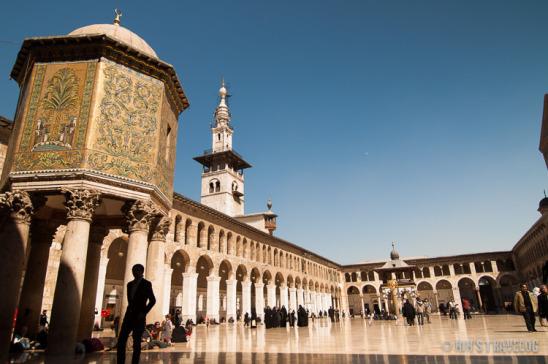
The grandeur of the Damascus’ Umayyad Mosque, breath taking, considering this was built in the 8th century.
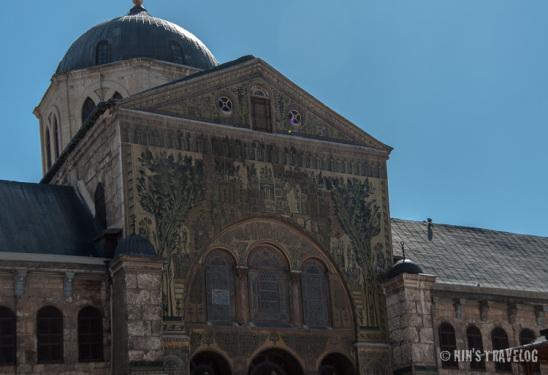
Facade of the inner courtyard elevation with Byzantium decoration
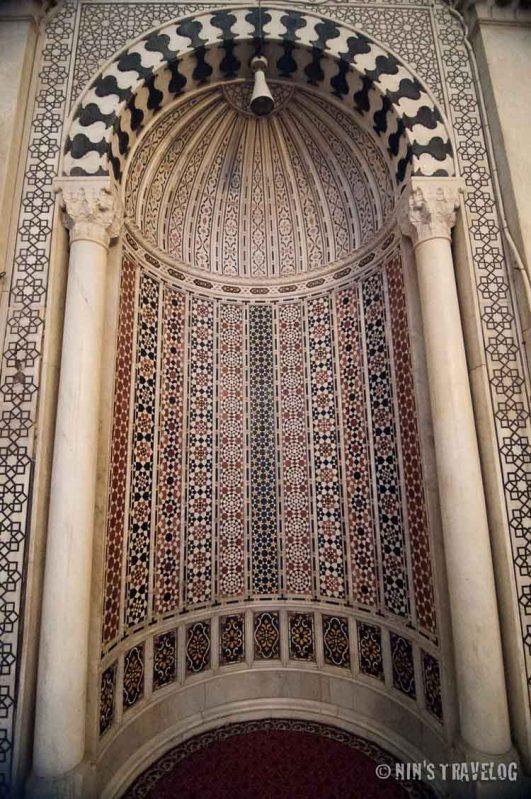
Mihrab or the niche/chamber in the mosque indicating the direction of praying
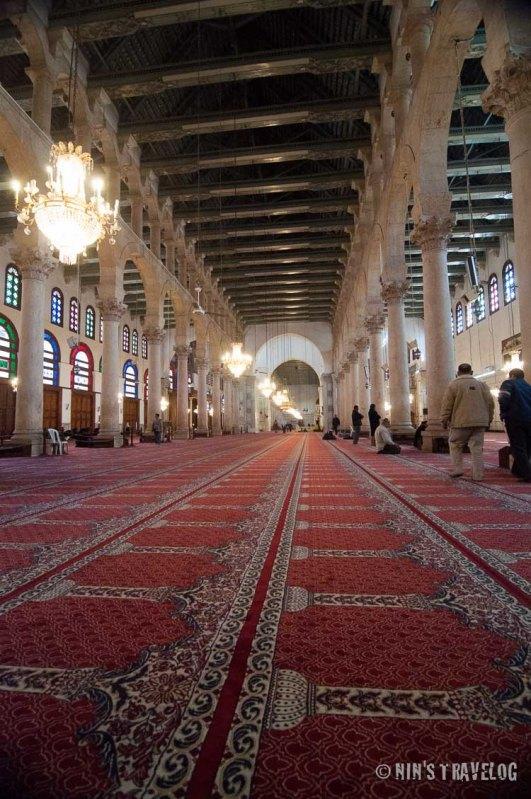
Prayer hall inside the mosque, with Corinthian Columns
The Minarets:
This mosque has 3 towers, or in the term of Islam architecture the word for tower is ‘minaret’:
- On the Eastern side of the Mosque it located Minaret of Jesus the tallest of the three minarets at 77m, and where the locals believe that this is where Jesus will descend during Judgement Day.
- On the North side of the Mosque is located the Minaret of the Bride, the oldest minaret
- On the South-West corner of the mosque is located the Al Gharbiyya Minaret,
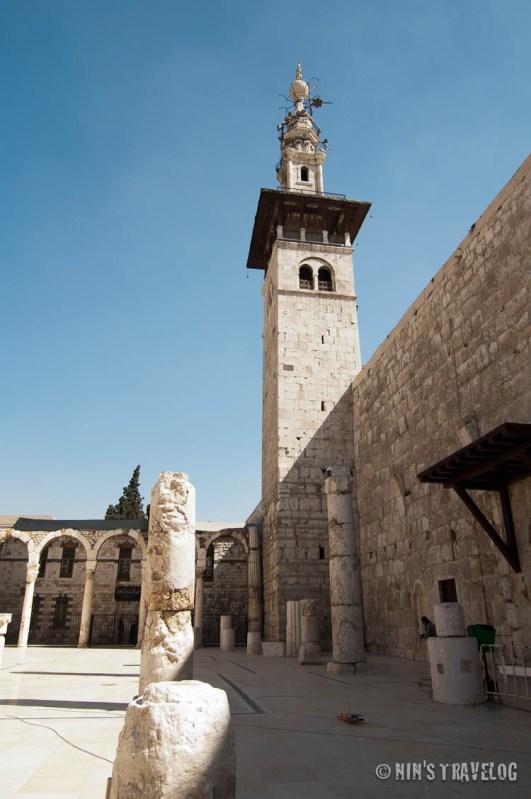
Minaret of the Bride, the first minaret built on this location
A small structure inside the prayer hall lies the head of John the Baptist, which they found during the excavation for the building of the mosque.
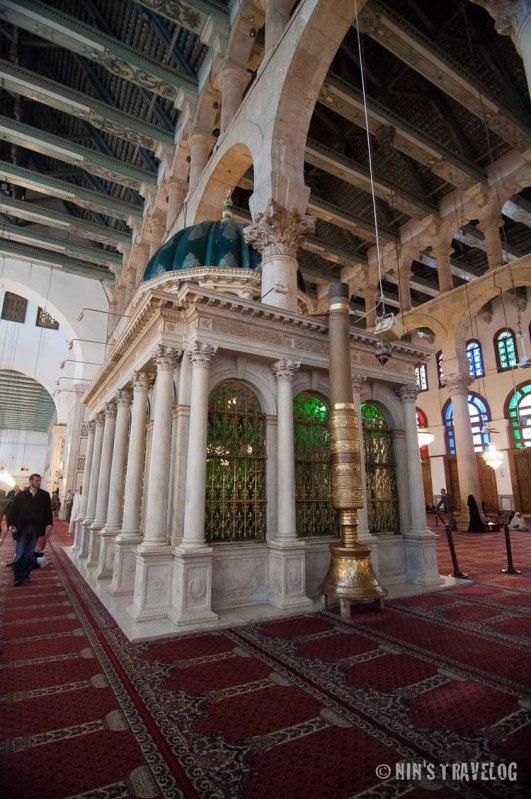
The shrine that housed John the Baptist’s head inside the prayer hall of the mosque
Yes, I understand, that the above information is a bit hard to take in, however, it is because of it’s richness of history and it’s existence up to the present day. My visit to this mosque as well as the whole of Syria, made me want to learn more about the history of Near East as well as to comeback to Syria provided the condition of the country is not as it is today.
